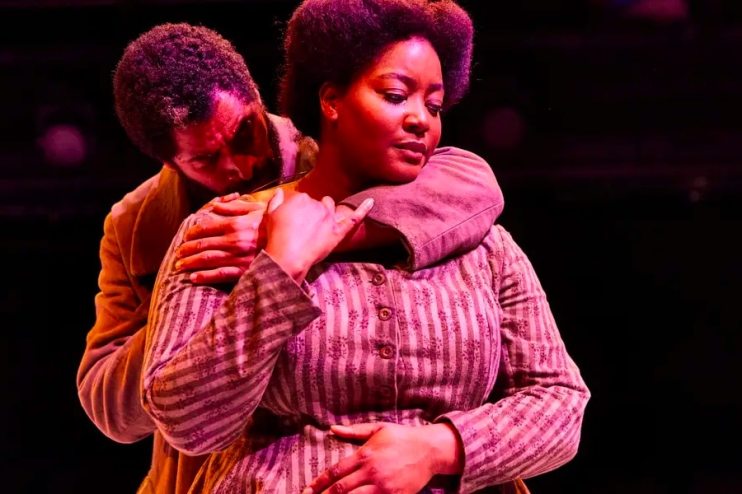Rockets and Blue Lights at National Theatre review

First performed in March 2020 at the Royal Exchange in Manchester, Rockets and Blue Lights ran for just three weeks before the pandemic yanked down the curtain. Now this strange, urgent, flawed, exasperating and occasionally brilliant play finally opens in London on the National Theatre’s Dorfman stage.
Winsome Pinnock’s play focuses on the legacy of slavery and how the stories of black people were, and continue to be, told through a white prism (the irony of her play being critiqued here by a white man is not lost). It was written as the debate about statues of slave owners was raging in the US but yet to peak in the UK, with the first performance coming three months before the statue of Edward Colston was plunged into the sea.
Pinnock fixates not on a statue but a painting, The Slave Ship by JMW Turner, which depicts slaves being thrown overboard, their hands grasping from the waves beneath a fiery sunset. Turner was seen as an important figure in the abolitionist movement, although as Pinnock’s play explores, this was not always the case, with the artist having invested in an (ultimately failed) slave-driven sugar plantation in his earlier years.
It opens with black British actor Lou (Kiza Deen) staring at the painting, both horrified and transfixed. A big name in the US, she is back home shooting a film called The Ghost Ship, which follows an elderly Turner haunted by his great, secret shame.
The two and a half hour play flits between Lou’s story as she attempts to avoid the studio’s whitewashing of the subject matter, Turner’s story as he tries to escape his past, the story of a modern-day school teacher and her students studying the atrocity, and that of a family of freed slaves trying to carve a life for themselves under the shadow of their terrible past.
By any count that’s a lot of stories, and things are made more complex still by the play’s tendency to merge the “real” and the historical, meaning you’re never quite sure if you’re watching an enactment of the past – a film within a play – or the past itself. This breaking down of chronological barriers seems to be a comment on the enduring legacy of slavery, but it requires some mental gymnastics to keep up.
I was also desperate to see more of Lou’s story: there are tantalising narrative threads, such as her relationship with her creepy, older co-star, and her burgeoning romance with an American historian, both of which eventually dissipate into Rockets and Blue Lights’ murky, intangible swirl.
The failings of the play’s broad approach are most exposed by the subplot featuring the teacher and her students, which reach an Ophelia-esque climax off-stage; a little more red pen would have gone a long way.
There are some impressive directorial flourishes from Miranda Cromwell, with water lapping up from one side of the stage and scene changes taking place in the claustrophobic blue of the ocean depths, but as with the play itself, there’s just too much going on, a propensity to throw things at the stage – song, dance, ghostly visions – to see what sticks.
The final moments bring the fourth wall crashing down, with a freed and recaptured slave naming prominent black people who have been murdered, including those from recent years. While moving and powerful in its own right, these feel like dots the audience could have joined, an ultimately heavy-handed way to underline the play’s themes.
Rockets and Blue Lights feels like the work of an artist thinking aloud, grasping for answers, more of a dialogue than a thesis. It’s fascinating and timely, important even, but it’s trapped beneath the issues it explores, daunted by the immensity of the task it sets itself, and the whole fails to reach the heights of its individual parts.
